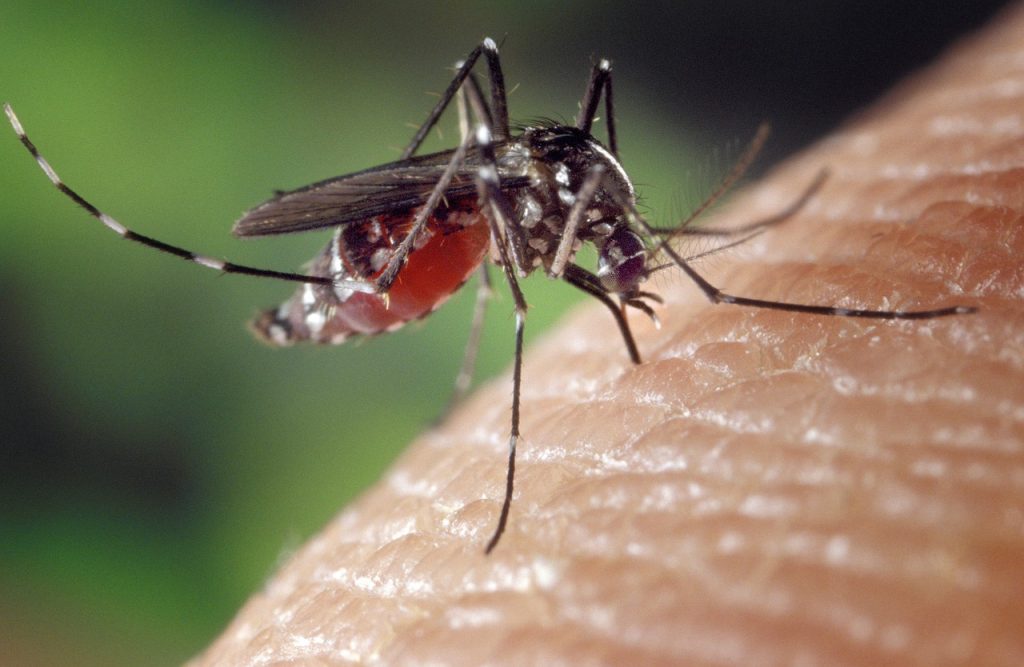Tuesdays with Tony
Eastern Equine Encephalitis
So I was scrolling through Facebook the other day (I may have hacked one of the docs pages, one day maybe they will let me have my own page) but to my surprise I came across a post about horses and people in Florida becoming infected with Eastern Equine Encephalitis. I was shocked and frankly a little scared! I have heard everyone around here talk about the dreaded “triple E” before and I even think we had a few cases come through the clinic last year. Nonetheless, reading about it being so close to home yet again, made me realize just how lucky I am that cats don’t get EEE.
What is EEE?
Eastern Equine Encephalitis, sometimes referred to as “Sleeping Sickness”, is a viral disease that affects birds, horses and humans. It typically occurs on the eastern half of the United States and more specifically in the southeast. “Encephal” means head or brain, and “-itis” means inflammation, therefore, the virus that causes EEE results in inflammation of the brain in both humans and horses. Birds typically are not affected by the disease and just carry it, although the exception to this is Emus.
How is EEE Transmitted?
Mosquitoes, what are they even good for? All they do is buzz around, bite us, cause horrible itchy skin, and spread nasty diseases. These little suckers are the main transmitters of EEE. A mosquito bites a bird that is a carrier of the virus. The mosquito then bites your horse (or you) and transmits the virus. Don’t you just wish we could wash mosquitoes mouths out with soap? Lucky for most birds and mosquitoes, the virus typically does not affect them, they are just the carriers and transmitters of the disease. However, once an infected mosquito bites you or your horse, the whole story changes. A horse that is infected with EEE cannot, however, spread the disease to another horse, or to a human, and humans cannot spread the disease to horses. Basically, transmission of the virus is the fault of birds and pesky mosquitoes.

Clinical Signs
90% of horses and 35-50% of humans that become infected with EEE will die from the disease. Once a horse is bitten by an infected mosquito it takes 7-21 days before clinical signs appear. An infected horse may initially show signs of depression, fever, increased heart rate, decreased appetite, and drooping of the eyes and lips, hence the term “Sleeping Sickness”. Clinical signs can eventually progress to weakness, erratic behavior, and seizures which can lead to your horse laying down and not being able to get back up.
Treatment
As an honorary doctor, my favorite thing about my job is the successful treatment of an ill patient. Sadly, EEE does not have a specific treatment, and supportive treatment is often unsuccessful. It hurts my kitty heart when I hear about a horse who has had to suffer through the effects of EEE. Of course, myself and the docs here will do all that we can for a horse who has contracted EEE.
The goal of supportive care is to treat fevers associated with EEE, and this is usually accomplished with the use of NSAIDs. Often times, horses with EEE will be placed on intravenous fluids and may require nutritional support as they typically have a hard time drinking and eating on their own.
Once a horse reaches the point of the disease where they lay down, it is unlikely they will stand back up. When they are down they can thrash and cause self-inflicted trauma. Slings have been used on occasion to assist a down horse back into the standing position, however, horses with EEE are typically in a comatose state and the use of a sling is widely unsuccessful. Since EEE is a virus, no kind or amount of antibiotics will be useful in treatment. Often, humane euthanasia is elected by owners to prevent their horse from further suffering.
Prevention
Fortunately, there is an extremely effective vaccination against EEE. As you are all well aware by now, my docs here are sticklers for upholding the highest standard of care for your horses. This includes the EEE vaccination which is also considered a “Core Vaccine”. What is a “Core Vaccine” you ask? Well, it is a vaccination that is vital to keeping your horse healthy and protected from diseases they are at risk for.
Here at the clinic we use a combination vaccine that will provide your horse protect from 4 or 5 of the common diseases they are exposed to. You may hear the docs or technicians refer to the vaccine being administered to your horse as the EWT/WN or EWTR/WN. All these letters can get very confusing at times. EWT/WN stands for Eastern encephalitis, western encephalitis, tetanus, and west nile, where as EWTR/WN includes all of the above plus the rhinopneumonitis vaccine.
These vaccines are given at least every 6 months. Horses that travel often or are in many competitions during the year may receive the EWTR/WN vaccine 3 times a year. The most important thing to remember is that mosquitoes are present in Florida all year long! Because of this, twice yearly vaccinations against the mosquito-borne illnesses including EEE and West nile are imperative to your horse’s health and frankly, their life.
It is definitely mosquito season and there have been reports of EEE all around the area, so if you think you might be behind on getting your horse vaccinated, give me a call at the clinic and we will get you on the schedule and your horse up-to-date.
Until next week,
~Tony
Tuesdays with Tony is the official blog of Tony the Clinic Cat at Springhill Equine Veterinary Clinic in Newberry, Florida. If you liked this blog, please subscribe below, and share it with your friends on social media! For more information, please call us at (352) 472-1620, visit our website at SpringhillEquine.com, or follow us on Facebook!
[jetpack_subscription_form title="Subscribe to Whinny's Wisdoms"]
